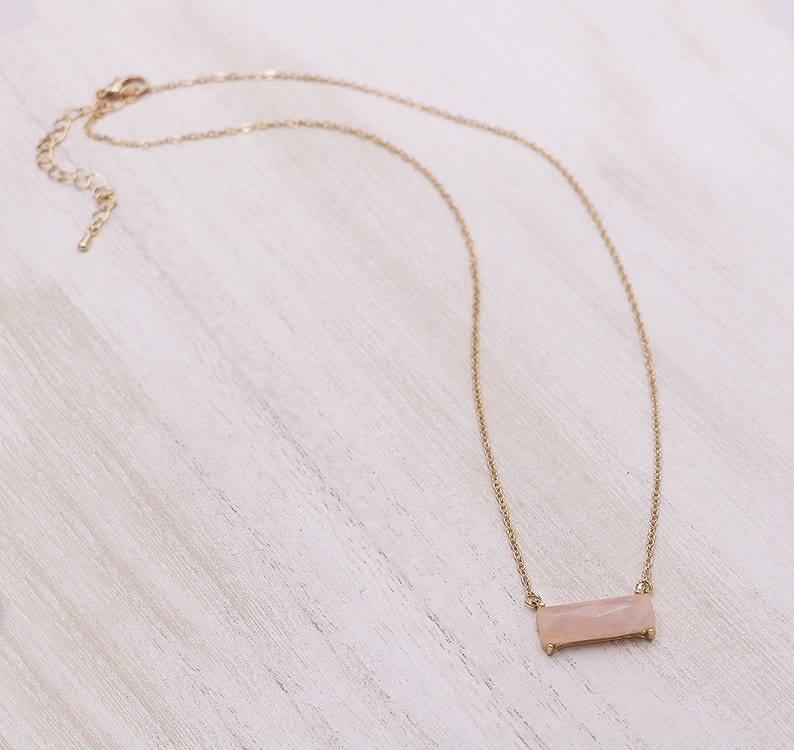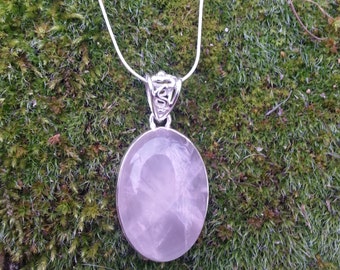

It’s still a cheap stone, even in the upper grades. The occasional facet can be found, particularly in vintage jewelry, but the ready availability of pink tourmaline has replaced it in all but the best of cases. That said, cabochons are often cut from large pieces of stone that show good color and are still a feature in jewelry. Facets require a high degree of clarity for the stone to look good and the material often lacks it. Rose quartz is rarely cut into faceted gemstones. Its ancient provenance has continued to this day. The material takes well to carving and it served as another hardstone medium alongside other quartz and chalcedony varieties. Later use of Rose Quartz in jewelry seems to occur in the 800-600BC era, ranging from Rome to the Assyrian Empire and Egypt. Drilling something as hard as rose quartz with primitive tools is truly a feat. Stone beads require a surprising amount of time and dedication with modern tooling. Early stone use was often in the form of beads, just showing that the human urge to make pretty things even prettier has been around since we started walking around. Rose Quartz Has Been Used in Jewelry for Thousands of Yearsīeads made of Rose Quartz can be found going back to 6000 BC. Just another reason why rose quartz is such an interesting material. It’s interesting to note that a stone with such a long history of use still has unknown variables in something as simple as its atomic structure. I don’t recommend trying that one at home. Like “crystal rose quartz” it also fades in sunlight but irradiation can bring the color back. More recent studies point to microscopically thin materials, primarily dumortierite or something similar, as the reagent responsible for the stone’s light pink coloration.Įxperiments with synthetic rose quartz have found that aluminum and phosphorous can be irradiated to create the pink color seen in the form of crystalline pink quartz we described above. Iron, in particular, is the coloring ingredient of amethyst, citrine, and prasiolite. All occur alongside quartz formations naturally (ie: the ugly stains on the side of uncleaned crystal formations) and color other gemstones. The usual suspects are iron, titanium, and manganese.

They can also be found in a huge variety of sizes, a rarity when most minerals are limited to smaller sizes by the nature of their formation. The massive nature of rose quartz is good for one thing: it means virtually every staple of the rock trade (ie: carved points, spheres, palm stones) is available for only a touch more than the cost of labor. Of course, there are also dyed quartz points out there for the unwary to snatch up thinking that they’re getting something rare. It’s all quite complicated when you get down to it, but it’s technically not rose quartz despite the superficial similarities. This crystalline form is often called pink quartz, or “crystallized rose quartz” and will lose color when exposed to light. Those available on the market currently are actually a different type of stone, with its own inclusions, that is photosensitive. Indeed, Rose Quartz rarely occurs as a natural point or other immediately recognizable crystalline forms. Instead, most Rose Quartz is a bunch of interlocked crystals creating a large mass. This makes Rose Quartz an ideal medium for hardstone sculptures and other large-scale uses that are rarely seen. Instead, Rose Quartz often occurs in enormous masses that are inches to feet across. When most of us think of quartz, we think of the smaller points that are available at every rock shop.


 0 kommentar(er)
0 kommentar(er)
